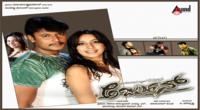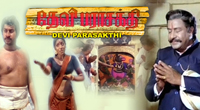

A medal or medallion is a small portable artistic object, a thin disc, normally of metal, carrying a design, usually on both sides. They typically have a commemorative purpose of some kind, and many are given as awards. They may be intended to be worn, suspended from clothing or jewellery in some way. They are traditionally struck like a coin by dies.
A medal may be awarded to a person or organization as a form of recognition for sporting, military, scientific, cultural, academic, or various other achievements. Military awards and decorations are more precise terms for certain types of state decoration. Medals may also be created for sale to commemorate particular individuals or events, or as works of artistic expression in their own right. In the past, medals commissioned for an individual, typically with their portrait, were often used as a form of diplomatic or personal gift, with no sense of being an award for the conduct of the recipient.
An artist who creates medals or medallions is called a "medalist". Medals have long been popular collectible items, and in numismatics form a class called either exonumia or militaria.
In the proper use of the term, medallions are larger, starting at perhaps four inches across, and are, as such, usually too large to be worn very comfortably, though in colloquial use, "medallion" is often used to refer to a medal used as the pendant of a necklace (as in the medallion man fashion style of the 1960s and 1970s), or for other types of medals. Medallions may also be called "table medals" because they are too large to be worn and can only be displayed on a wall, table top, desk, or cabinet.
Contents
Main types
Numismatists divide medals into at least seven classes:
- Awards: awarded to a person or organization as a form of recognition for sporting, military, scientific, cultural, academic, or various other achievements. Military awards and decorations are more precise terms for certain types of state decoration. Military decorations are often in shapes such as crosses or stars, but are still loosely called "medals", as in the star-shaped American Medal of Honor.
- Commemoratives: created for sale to commemorate particular individuals or events, or as works of medallic art in their own right.
- Souvenirs: similar to a commemorative, but more focused on a place or event like state fairs, expositions, museums, historic sites, etc., and frequently found for sale within their respective souvenir shops.
- Religious: devotional medals may be worn for religious reasons.
- Portraits: produced to immortalize a person with their portrait; European portrait medallions sometimes bear the Latin word Aetate to describe the depicted person's age at the time of the portrait.
- Artistic: made purely as an art object. Plaquettes are often of this type.
- Society Medals: made for societies used as a badge or token of membership.
Etymology
First attested in English in 1578, the word medal is derived from the Middle French médaille, itself from Italian medaglia, and ultimately from the post-classical Latin medalia, meaning a coin worth half a denarius. The word medallion (first attested in English in 1658) has the same ultimate derivation, but this time through the Italian medaglione, meaning "large medal". There are two theories as for the etymology of the word medalia: the first being that the Latin medalia itself is derived from the adjective medialis meaning "medial" or "middle"; the second being that medaglia comes from the Vulgar Latin metallea (moneta), meaning "metal (coin)" and that from Latin metallum, which is the latinisation of the Greek ???????? (metallon), "a mine".
Features
Traditionally medals are stamped with dies on a durable metal flan or planchet, or cast from a mould. The imagery, which usually includes lettering, is typically in low relief. Circular medals are most common; rectangular medals are often known as plaquettes. The "decoration" types often use other shapes, especially crosses and stars. These in particular usually come with a suspension loop, and a wide coloured ribbon with a clip at the top, for attaching to clothing worn on the chest.
The main or front surface of a medal is termed the obverse, and may contain a portrait, pictorial scene, or other image along with an inscription. The reverse, or back surface of the medal, is not always used and may be left blank or may contain a secondary design. It is not uncommon to find only an artistic rendering on the obverse, while all details and other information for the medal are inscribed on the reverse. The rim is found only occasionally employed to display an inscription such as a motto, privy mark, engraver symbol, assayer’s marking, or a series number.
Medals that are intended to be hung from a ribbon also include a small suspension piece at the crest with which to loop a suspension ring through. It is through the ring that a ribbon is run or folded so the medal may hang pendent. Medals pinned to the breast use only a small cut of ribbon that is attached to a top bar where the brooch pin is affixed. Top bars may be hidden under the ribbon so they are not visible, be a plain device from which the ribbon attaches, or may even be decorative to complement the design on the medal. Some top bars are elaborate and contain a whole design unto themselves.
Bronze has been the most common material employed for medals, due to its fair price range, durability, ease with which to work when casting, and the ample availability However, a wide range of other media have also been used. Rarer metals have been employed, such as silver, platinum, and gold, when wishing to add value beyond the mere artistic depiction, as well as base metals and alloys such as copper, brass, iron, aluminum, lead, zinc, nickel, and pewter. Medals that are made with inexpensive material might be gilded, silver-plated, chased, or finished in a variety of other ways to improve their appearance. Medals have also been made of rock, gemstone, ivory, glass, porcelain, terra cotta, coal, wood, paper, enamel, lacquerware, and plastics.
History
The first known instance of a medal being awarded comes from the historian Josephus who, writing long after the event, accounts that in the fourth century BCE, the High Priest Jonathan led the Hebrews in aid of Alexander the Great, and that in return for this, Alexander "...sent to Jonathan... honorary awards, as a golden button, which it is custom to give the king's kinsmen." Roman emperors used both military awards of medals, and political gifts of medallions that were like very large coins, usually in gold or silver, and die-struck like coins. Both these and actual golden coins were often set as pieces of jewellery, worn by both sexes.
The bracteate is a type of thin gold medal, usually plain on the reverse, found in Northern Europe from the so-called "Dark Ages" or Migration Period. They often have suspension loops and were clearly intended to be worn on a chain as jewellery. They imitate, at a distance, Roman imperial coins and medallions, but have the heads of gods, animals, or other designs. The Liudhard medalet, produced around AD 600 in Anglo-Saxon England, is an isolated example, known from a single copy, of a Christian medal, featuring an inscription naming Liudhard (or "Saint Letard"), the first priest among the Anglo-Saxons, and most likely presented to converts. The surviving example is mounted for wearing as jewellery.
In Europe, from the late Middle Ages on, it became common for sovereigns, nobles, and later, intellectuals to commission medals to be given simply as gifts to their political allies to either maintain or gain support of an influential person. The medals made be made in a range of metals, such as gold, silver-gilt, silver, bronze, and lead, depending on the status of the recipient. They were typically up to about three inches across, and usually featured the head of the donor on the obverse, surrounded by an inscription with their name and title, and their emblem on the reverse, with a learned motto inscribed round the edges. Such medals were not usually intended to be worn, although they might have been set as pendants on a chain. From the 16th century onward, medals were made, both by rulers for presentation and private enterprise for sale, to commemorate specific events, including military battles and victories, and from this grew the practice of awarding military medals specifically to combatants, though initially only a few of the much higher-ranking officers.
The medieval revival seems to have begun around 1400 with the extravagant French prince Jean, Duc de Berry, who commissioned a number of large classicising medals that were probably produced in very small numbers, or a unique cast. Only casts in bronze from the originals in precious metal survive, although it is known that at least some medals were also set with jewels, and these may well have been worn on a chain. At the same period, the first known post-classical medal commemorating a victory was struck for Francesco Carrara (Novello) on the occasion of the capture of Padua in 1390. The Italian artist Pisanello, generally agreed to be the finest medallist of the Renaissance, began in 1438 with a medal, celebrating the unprecedented visit of the Byzantine Emperor John VIII Palaiologos to Italy. This was presumably a commercial venture, but his later medals were mostly commissioned for distribution as gifts by rulers or nobles. Like almost all early Renaissance medals, it was cast rather than die-struck. With each successive cast the medal became slightly smaller, and the numbers that could be produced were probably not large. A lead "proof" was probably often used. The association between medals and the classical revival began to take a rather different form, and the exchange of medals became associated with Renaissance Humanism. Princes would send humanist writers and scholars medals in recognition of their work, and the humanists began to make their own medals, normally in bronze, to send to their patrons and peers. The fashion remained restricted to Italy until near the end of the 15th century, when it spread to other countries. By the 16th century, medals were increasingly produced by rulers or cities for propaganda purposes. In 1550, a die-stamping machine, using steel dies, was introduced in Augsburg, Germany, and soon this process became standard. The artist now cut an intaglio die rather than modelling in relief.[12]
By the 16th century, the wearing of smaller medals on a chain was a persistent fashion for both sexes, and a variety of medals were produced commercially for the purpose, commemorating persons or events, or just with non-specific suitable sentiments. German artists had been producing high-quality medals from the beginning of the century, while the French and British were slower to produce fine work. However, by the late 17th century, most parts of Western Europe could produce fine work. Some medals were also collected, which continues to the present day. Official medals, from which specialized military awards descended, were increasingly produced, but the real growth in military medals did not come until the 19th century. Devotional medals also became very popular in Catholic countries. During the Reformation there had also been a vigorous tradition of Protestant medals, more polemical than devotional, which continued with the Geuzen medals produced in the Dutch Revolt.
Military medals and decorations
Military decorations, service awards, and medals are often mistakenly confused with one another. Decoration is a term for awards which require specific acts of heroism or achievement (such as the British Victoria Cross or Am
Watch movie Medal online on Amazon
Watch movie Medal online
Watch The Movie On PrimeZulmi Full HD Movie Download

Shikari Full HD Movie Download

Silsila Hai Pyar Ka Full HD Movie Download

Kanwarlal Full HD Movie Download

Arjun Full HD Movie Download

Zindagi Zindagi Full HD Movie Download

Humare Tumhare Full HD Movie Download

Is Raat Ki Subah Nahi Full HD Movie Download

Qila Full HD Movie Download

Delhi-6 Full HD Movie Download

Jai Maa Vaishnav Devi Full HD Movie Download

Chak Jawana Full HD Movie Download

Johny Ustad Full HD Movie Download

Mylari Full HD Movie Download

Dadagiri Nahin Chalegi Full HD Movie Download

The Hangover Full HD Movie Download

Harry Potter and the Chamber of Secrets Full HD Movie Download

The Matrix Reloaded Full HD Movie Download

Devi Parasakthi Full HD Movie Download

Aayudham Full HD Movie Download

No Full HD Movie Download

Download latest Movie from bollywood
- 1> baaghi 3
- 2> THE SKY IS PINK MOVIE FULL STORY AND REVIEW
- 3> Luka Chuppi
- 4> TO ALL THE BOYS I’VE LOVED BEFORE
- 5> Kabir Singh
- 6> Street Dancer 3D
- 7> Simmba
- 8> Gone Girl
- 9> The Girl Who Lived
- 10> Ludo
- 11> DILWALE DULHANIA LE JAYENGE
- 12> GUILTY
- 13> The Godfather
- 14> Adventures of Rusty
- 15> Sooryavanshi
- 16> Satyameva Jayate 2
- 17> Thappad
- 18> Bhool Bhulaiyaa 2
- 19> KGFChapter 2
- 20> Mardaani 2
- 21> Pinjar
- 22> Shivaji maharaj
- 23> Ek Villian 2
- 24> Hungama 2
- 25> Divergent
- 26> Mumbai Saga
- 27> The Internship
- 28> HIT (telugu)
- 29> Panga
- 30> The perfect date
- 31> 16 December
- 32> Gopala Gopala (Telugu)
- 33> Brahmastra
- 34> Gangubai Kathiawadi
- 35> Manmadhudu
- 36> Nenu local
- 37> Mahanati
- 38> Shatamanam bavathi
- 39> Lagaan
- 40> After
- 41> MOM
- 42> Shamshera
- 43> Raguvaran BTech
- 44> Khakee
- 45> The villain
- 46> OM
- 47> Mr. perfect
- 48> Bueatifull mind
- 49> Hichki
- 50> Gabbar Singh
- 51> Jogi
- 52> Before Sunrise
- 53> Before Sunset
- 54> Before Midnight
- 55> The Big Bull
- 56> Top Gun: Maverick
- 57> The Purge
- 58> The Sky is Pink
- 59> Laxmmi Bomb
- 60> Sadak 2
- 61> Sufna
- 62> Prithviraj
- 63> PK
- 64> Coolie No 1(2020)
- 65> Black Widow
- 66> Dear Zindagi
- 67> Dil Bechara
- 68> PHIR HERA PHERI
- 69> WAR
- 70> Dostana
- 71> RRR: Roudram Ranam Rudhiram
- 72> Maidan
- 73> Dabbang 3
- 74> Chhalaang
- 75> life as we know it
- 76> SherShaah
- 77> Sandeep Aur Pinky Faraar
- 78> Event Horizon
- 79> 83
- 80> Radhe: Your Most Wanted Bhai
- 81> Gunjan Saxena: The Kargil Girl
- 82> Mr India
- 83> Vivah
- 84> Anokha Bandhan
- 85> Ghost
- 86> Bhoot: Part One - The Haunted Ship
- 87> Haseen Dilruba
- 88> Laal Singh Chaddha
- 89> Qismat
- 90> Rajput
- 91> Drive
- 92> Dil Chahta Hai
- 93> Dil Ki Baazi
- 94> Dil Ka Rishta
- 95> Teesri Manzil
- 96> Dil
- 97> Love Aaj Kal
- 98> Khaali Peeli
- 99> Bunty Aur Babli 2
- 100> Atrangi Re
- 101> Gulabo Sitabo
- 102> Jodi
- 103> Suraj Pe Mangal Bhari
- 104> Deewana
- 105> Attack
- 106> Sardar Udham Singh
- 107> Toofan
- 108> THE LOVEBIRDS
- 109> Jersey
- 110> Ginny Weds Sunny
- 111> Thalaivi
- 112> Shiddat
- 113> Angels vs Zombies
- 114> Koi Mil Gya
- 115> Thank God
- 116> Bhuj: The Pride of India
- 117> Hum Aapke Hain Kaun
- 118> The Platform
- 119> Bird Box
- 120> Roohi Afzana
- 121> Torbaaz
- 122> Nikamma
- 123> World War Z
- 124> Extraction
- 125> Train to Busan
- 126> Life of Pi
- 127> SHAADI MEIN JROOR AANA
- 128> Himmat Aur Mehnat
- 129> To All The Boys: P.S. I Still Love You
- 130> Mimi
- 131> Good Newwz
- 132> Shubh Mangal Zyada Saavdhan
- 133> Raabta
- 134> Harry Potter and the Philosopher's Stone
- 135> Harry Potter and the Chamber of Secrets
- 136> Chhapaak
- 137> War of the Worlds
- 138> Harry Potter and the Prisoner of Azkaban
- 139> Harry Potter and the Goblet of Fire
- 140> MURDER MYSTERY
- 141> Shakuntala Devi
- 142> Bachchan Pandey
- 143> Jayeshbhai Jordar
- 144> Sheer Qorma
- 145> Saina
- 146> 'O' Pushpa I hate tears
- 147> Kedarnath
- 148> MS Dhoni The Untold Story
- 149> Chhichhore
- 150> Badhaai Ho
- 151> Unstoppable
- 152> Oz the Great And Powerful
- 153> The Girl on the Train
- 154> Haathi Mere Saathi 2020
- 155> The Conjuring: The Devil Made Me Do It
- 156> Gandhi Se Pehle Gandhi
- 157> The Song of Scorpions
- 158> Srimanthudu
- 159> Hello Guru Prema Kosame
- 160> Beauty and The Beast
- 161> Black Panther
- 162> Charlie and the Chocolate Factory
- 163> Bole Chudiyan
- 164> Fidaa
- 165> Duvvada Jagannadham
- 166> Bruce Lee: The Fighter
- 167> Hyper
- 168> Yaara
- 169> Red (2020)
- 170> Shivam
- 171> That Is Mahalakshmi
- 172> Nishabdham
- 173> Aashram 2020 web series
- 174> Laxmii
- 175> Mismatched
- 176> STUDENT OF THE YEAR 2
- 177> NAIL POLISH
- 178> Ramprasad Ki Tehrvi
- 179> KAAGAZ
- 180> 12 o Clock
- 181> The Power
- 182> bolo hau
- 183> Tribhanga
- 184> JAMUN
- 185> Madam Chief Minister
- 186> Maasaab
- 187> Aadhaar
- 188> Tanhaji
- 189> Bhaagi 3
- 190> Bhootnath
- 191> MALANG
- 192> Jai Mummy Di
- 193> Haathi Mere Saathi 2021
- 194> Shakeela
- 195> Unpaused
- 196> Annayya
- 197> Vamsoddharakudu
- 198> Mrugaraju
- 199> Narasimha Naidu
- 200> Sankranti
- 201> Manasu Maata Vinadhu
- 202> Anjaane
- 203> Apaharan
- 204> Bachke Rehna Re Baba
- 205> Bewafaa
- 206> Roohi
- 207> Radhe
- 208> Zindagi Khoobsoorat Hai
- 209> Yeh Mohabbat Hai
- 210> Yeh Kya Ho Raha Hai?
- 211> The Tomorrow War
- 212> DehradunDiary
- 213> Meri Shaadi Karaoo
- 214> Matruu Ki Bijlee Ka Mandola
- 215> No One Killed Jesica
- 216> Aag Ka Goola
- 217> Eight Million Dollars
- 218> Three Hundred
- 219> Cats and Dog
- 220> Decoy
- 221> Gold Rush
- 222> You Have Got Mail
- 223> Final Destination three
- 224> Tofan
- 225> Jungle
